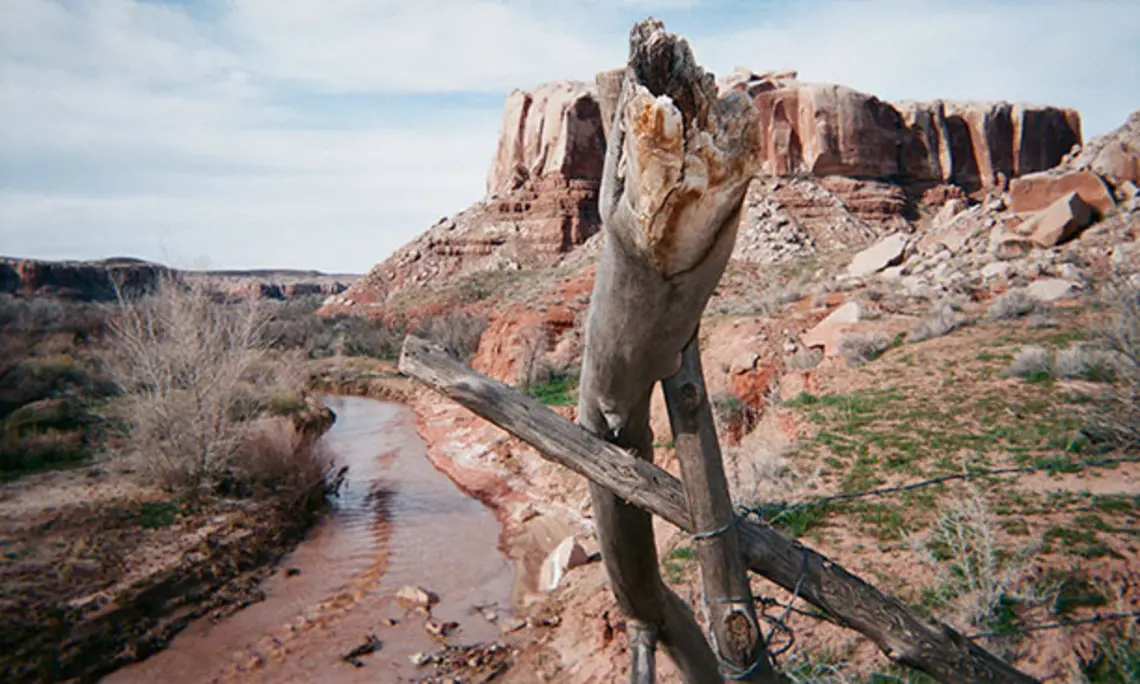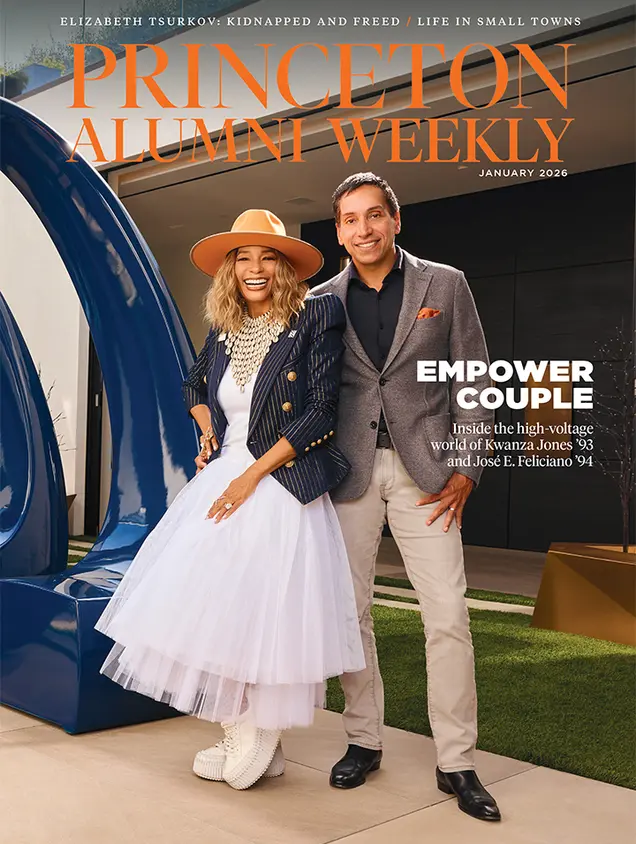
Among the class trips during spring break was one that sent students to southeastern Utah to explore the historic, cultural, and natural-resource issues at the heart of the dispute over Bears Ears National Monument. Emily McLean ’20 shares her perspective on the experience in this audio piece for PAW.
Read more in a report from another student in the course, Peter Schmidt ’20.
TRANSCRIPT
Emily McLean: Eleven Princeton students roam through a canyon in dead silence, charged with reflecting on the experiences of the past week. The sun is just starting to rise, and the shadows of the canyon walls are slowly retreating across the valley. Some scramble up rocks to the top of the cliff while others walk across a field towards a river that winds its way through the landscape. It’s been rainy this winter; the valley is lush and the river is flowing fast and strong.
This group of students, including me, is part of a class called “Exposure: The Storied Landscape of Bears Ears National Monument and America’s Public Lands.” It’s taught by Fazal Sheikh ’87, a photographer who has made aerial photographs of the Four Corners region of southern Utah, Arizona, Colorado, and New Mexico. Fazal has taken us to this canyon so we can produce images for our final exhibition as well as to process and reflect what has happened on this trip.
[Ute Flute Music]
EM: Our first stop was Castle Valley, Utah, one of the most beautiful places I’ve ever been. Red sandstone walls ringed our inn on three sides while a vast, snowcapped mountain range blocked the final side. The next day, we had a writing workshop at the home of Terry Tempest Williams, a writer whose work we’ve been reading, and her husband Brooke. This is Julianne Knott describing the scene.
Julianne: It was amazing how just warm their home was. Both in terms of physical setting and their welcoming-ness of us. You pull up and you see the driveway, and it’s a very unassuming sort of bungalow from the front, and then the whole backside is just open windows framed in wood and with wooden blinds with just majestic views of the canyons and mountains and all the rock formations.
EM: Later in the day, they took us on a hike through the canyons of Castle Valley. Terry and Brooke showed us native desert plants, including sage. Here she is telling us about the plant.
Terry: And you know sage as you know is used among almost every tribe for purification, for protection … the sagebrush steppe, in the American west is now an endangered landscape because of oil and gas. You know, with creatures such as the pronghorn antelope, with the jackrabbit, with sage grass. In my lifetime if you would have told me, growing up, that sage would one day be less you know prolific, I would never, never, never have believed you. And today ...
Sage grows where disturbance is found, so it makes sense that it would be by the gate where vehicles have been.
EM: After a whirlwind two days in Castle Valley, our caravan drove to Blanding, Utah, a predominantly Mormon city situated next to Westwater, a Native American community. Blanding doesn’t provide utilities, most importantly water, to Westwater; residents must instead purchase water that is trucked in. Many rely on solar panels for a limited source of electricity. We met with an old friend the next day, Jonah Yellowman. Jonah lives on Navajo Nation, a roughly 17.5 million acre swath of land that stretches across parts of Utah, Arizona, and New Mexico. Jonah is a spiritual leader in the Navajo community and an outspoken proponent of Bears Ears National Monument. He works to get the monument back to its original size, as designated by President Obama. When we arrived at his house, which relies on trucked-in water and solar panels with a small wind turbine for power, he showed us how to set up his large teepee. Jonah called teepees “Native American churches,” where religious ceremonies are often performed. After our lunch, we played basketball with some of Jonah’s grandkids, then went for a walk across the reservation. Jonah and his family were incredibly gracious in welcoming us into their homes, and we were all sad to say goodbye. This is Julianne Knott again, talking about how everyone opened their homes to us.
Julianne: I think the most impactful part was just witnessing how extraordinarily welcoming the community was in their hospitality, especially Jonah and his family in inviting us into their home and really putting in a lot of effort to making sure we had the best experience possible and answering all of our questions and sharing all of their stories to us.
EM: On the fifth day we had our first silent period in the canyon which, unlike the one I mentioned in the opening, was at sunset. [river bubbling noises] We were handed disposable cameras and told to take photos of whatever felt right. I climbed up a rock scramble, photographing petroglyphs, or rock art, of horses and deer that I found at the top, then meandered along the river. It was a contemplative and, honestly, freeing environment, time to process all the emotions and reactions that had accompanied the past few days. But the week was hardly over.
The next day, we had lunch with Willie Grayeyes, a newly-elected county commissioner of San Juan County, the part of Utah that contains what’s left of Bears Ears. Two of San Juan’s three commissioners are now Native American, shaking up the traditional power dynamic of the area. Willie is committed to working on infrastructure, particularly on indigenous lands, as well as public-land issues.
Later on we met up with Ida, whose family land has been taken over by nearby oil and gas drilling. You can smell the fumes in the air when you go outside or open the car window. It was shocking to see how close these drilling stations got to places where people are still living. Peter Schmidt, another student in the class, talks about why this was so impactful for him.
Peter: I think it was visiting the Aneth oil fields with Ida, because, and it’s a personal thing, academically and personally I’m interested in, I’m concerned with environmental issues and how they intersect with issues like racism and colonialism, and that’s all well and good from an academic, theoretical perspective, but I rarely have the opportunity to see it in real life, in the concrete, and seeing Ida standing there, next to the stone foundations of the house where her mother grew up, that her grandmother lived in, and the generations before them, in plain sight of these pumpjacks bobbing up and down, was a visceral example of how these sorts of energy industries intrude on people’s lives.
EM: We sped back to Bluff to catch a town hall meeting with San Juan’s House Representative, John Curtis. A lot of questions were raised about Bears Ears, and he was a proponent of achieving consensus-based legislative action rather than waiting for the lawsuits currently pending against President Trump’s reduction of the monument. After the meeting, Ida, Angelo, and Aldeen, a Ute master flutist, came back to where we were staying. Aldeen played songs for us on handcrafted wooden flutes, deftly reproducing the calls of animals with just the small instruments.
[Aldeen playing flutes]
EM: Another town hall meeting was in store for the next day, this time in the Navajo community of Mexican Water. Questions were raised about mining, because Utah contains a startling number of current and former uranium mines, many of which are on Native lands and improperly capped, leeching chemicals into the groundwater. It’s no wonder why residents of areas near uranium mines believe that their towns’ cancer rates are far above average. On our final day, we had our sunrise silent reflection period in the canyon that I described in the beginning. It was the right way to end the trip.
After our excursion, I’ve found myself wanting to do something more long-term about the area and its people, and I think I’m going to write my thesis on something related to what we learned and experienced while in Utah. The trip left that much of a mark on me and, I’m sure, everyone else who went.
Paw in print

January 2026
Giving big with Kwanza Jones ’93 and José E. Feliciano ’94; Elizabeth Tsurkov freed; small town wonderers.


No responses yet